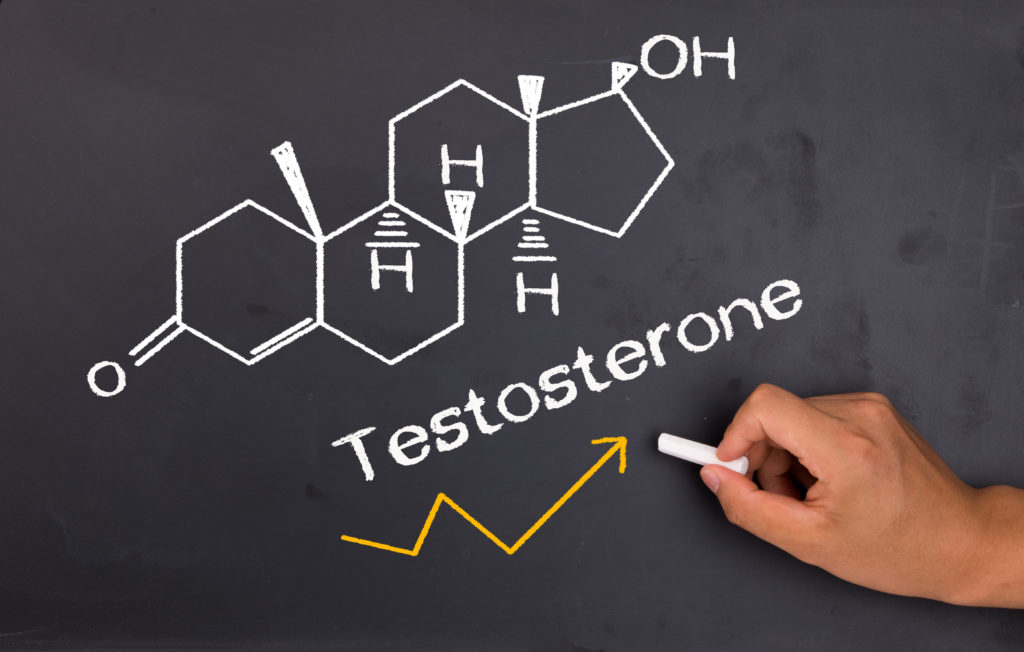“Normal” DOES NOT EQUAL “Optimal”
When it comes to hormone replacement striving for optimal should be the goal. Take for instance testosterone. Like many hormones the body makes, testosterone production declines as we age. Getting older never means a rise in free testosterone levels. Unless there is some sort of pathology present (i.e. a disease state like certain types of androgen secreting tumors) this rule always holds true.
Conventional practice has been to replace hormones back into the middle range of normal for that person’s age group, and only replaced if the hormone was “low” to begin with. Why, you may ask? It’s not real clear on how this came to be. More than likely this practice comes from trying to “do no harm” and wanting to “play it safe”, both of which are noble goals in many cases. Though as we start to scratch below the surface we find this concept is likely rooted in a misunderstanding of the literature regarding hormone replacement and more specifically the risks vs. benefits of hormone replacement.
To be very clear, what we are writing about in this post is “bio-identical” hormones, i.e. hormones that are no different molecularly than what our bodies naturally produce. This is in contrast to the “synthetic” hormones that are most often marketed and sold across the world. Think Premarin ( the famous or infamous estrogen derived from pregnant horse urine studied in the WHI- Womens Health Initiative) versus estradiol (one of 3 estrogens the human body makes naturally). Many of the risks surrounding hormones are based upon studies of synthetic hormones that are incorrectly extrapolated to their bio-identical counterparts. Studies on bio-identical hormones have shown this difference.
In addition, media headlines and/or healthcare providers who are either 1) not proficient in reading and interpreting a medical study or 2) not interested in reading past the abstract (an abstract is basically a summary of the study’s findings) spread an opinion that is not based in good science. Over time this narrative becomes truth and subsequently the health and quality of life of patients suffer.
When we try to mimic the hormones of a young healthy male or female (19/20 yrs old) we get the max benefit from therapy. Granted there are exceptions to every rule. For instance, I certainly wouldn’t support say optimization of testosterone in a patient who has an untreated, unfollowed, active prostate cancer. In that scenario a consult with a urologist who is well versed in testosterone’s effect on prostate cancer (think Dr. Morgentaler from Harvard) would be needed. But excluding those outliers, testosterone optimization is the ideal. Why would anyone want the testosterone levels of an average 55 year old? Average is not healthy nor optimal in these scenarios.
Another physician might ask, “Well what about the risks for heart disease, clots, high red cell counts, infertility ?” The quick answer would be there is no good evidence that TRT (testosterone replacement therapy) increases risk for heart disease or strokes. See article for recent consensus points on TRT from experts in the field.
https://www.mayoclinicproceedings.org/article/S0025-6196(16)30115-X/pdf
The next part of the response would be “is a higher red cell count really that big of a deal?” ***More on that topic in another post coming soon. As a little teaser… the clot risk concerns around the rise in RBC counts due to TRT revolve around a separate and very different condition called “polycythemia vera”, a type of blood cancer where red cells, white cells, and platelets are all often elevated. A rise in red cell counts from TRT is more accurately termed “erythrocytosis”. If a high red cell count (i.e. elevated hematocrit or hemoglobin) really does lead to a significant risk for clots then I suppose we should make all adults living in Bolivia (4000 m), or any other city at high altitude, move down to sea level? see article- High Alt Med Biol. 2001 Fall;2(3):361-7. Interestingly, healthy adult men in Bolivia average 53% on hematocrit and the normal range was 45% to 61% ! And these men are not dropping over left and right with strokes, heart attacks, and DVTs. Granted this comparison to men on TRT in Nashville, TN is not 100% perfect but it does show that the current long held belief is not so simple.
The take home message is that in the vast majority of cases there are no reasons why optimization can’t be attempted. The benefits to health and quality of life typically far outweigh any potential risks. And the risks that may present after initiation of therapy are often mild and easily treatable; think oily skin, pimples, or a rise in estrogen. If the provider has a genuine concern (whether it’s actually about patient safety and/or a medical liability concern-“CYA”) about an elevated Hct (hematocrit) of say 54% then the provider can recommend a blood donation at Red Cross. If patient can’t donate blood at Red Cross for whatever reason then provider can consider an order for “therapeutic phlebotomy” which is basically the same thing as a blood donation but the blood is most often thrown away. Another option is lower testosterone dosage or even switching modes of replacement therapy- for instance from injections to topical.
Final thought. Indeed other hormones like insulin might increase as we age and this is not a good thing. An elevated insulin level (fasting insulin) is often associated with type 2 diabetes, whereby excessive carbohydrate intake outpaces a person’s fuel needs. This causes the pancreas to produce more and more insulin in order to keep the blood sugar in the normal range. Over time insulin may begin to work less well and subsequently blood sugar will rise in the blood. In some cases the pancreas may also become “tired” and begin to produce less insulin than the body requires for normal functioning. In this scenario an “optimal” level for insulin would be lower; again similar to that of a young healthy person.
What other hormones should be optimized? How about thyroid? Estrogen? Progesterone? Growth Hormone? More on thyroid in another post coming soon. Thyroid is another great example of mis-information regarding risks of replacement/optimization.
What about optimization in a person who’s hormones are still “normal”?
Is there such thing as too much testosterone?
We will explore these questions and more in upcoming posts. Stay tuned and thanks for checking us out.
J. Brandon Sweat FNP-C- clinic director for Revital Health Clinics


